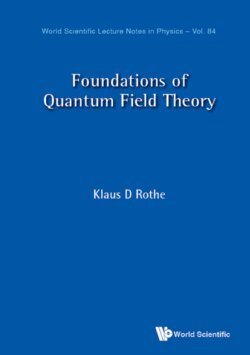Читать книгу Foundations of Quantum Field Theory - Klaus D Rothe - Страница 25
На сайте Литреса книга снята с продажи.
Probability interpretation
ОглавлениеIn the free-particle case, we attempted to identify the probability density with the time component of a conserved 4-vector-current. It was found to satisfy all requirements, provided we restricted ourselves to positive energy solutions from the outset. As we now show, this will no longer be possible in the presence of an electromagnetic interaction, which will invariably lead to transitions to states involving negative energy solutions.
Following the general line of approach adopted in the free particle case, we note to begin with that we can define again a conserved current by
This current is gauge-invariant
and thus defines a Lorentz covariant observable.
With the aid of the equation of motion (3.11) one easily checks that this current is conserved:
Since jμ transforms like a 4-vector density, we take its zero component to define the probability density:
Unfortunately this definition of the probability density already violates positivity for “positive energy” solutions; indeed, consider the stationary wave function
Substitution into (3.19) yields
Hence, even if E > 0, this density is not positive semi-definite, since the sign of the Coulomb potential can be either positive or negative.
The above considerations lead us to abandon at this stage our search for a relativistic scalar wave equation conforming to the principles of non-relativistic quantum mechanics. We shall, however, return to the field equation (3.11) after having learned in Chapter 7 to interpret ϕ(x) as an operator-valued field acting on a Hilbert space of Fock states.
